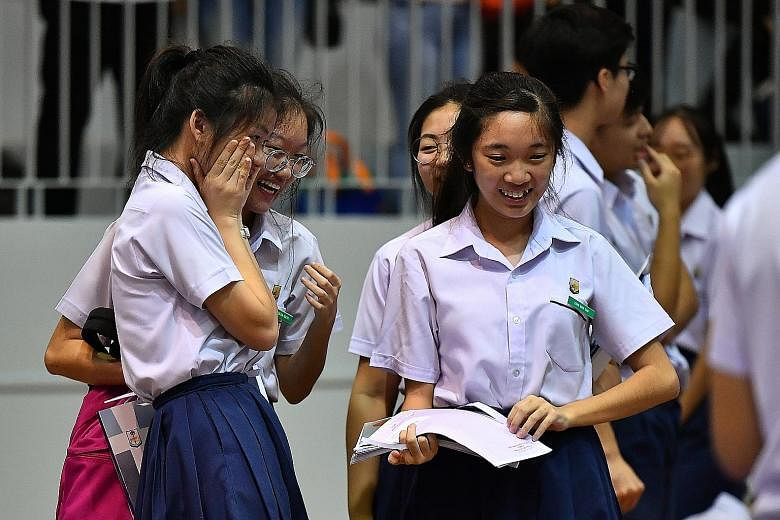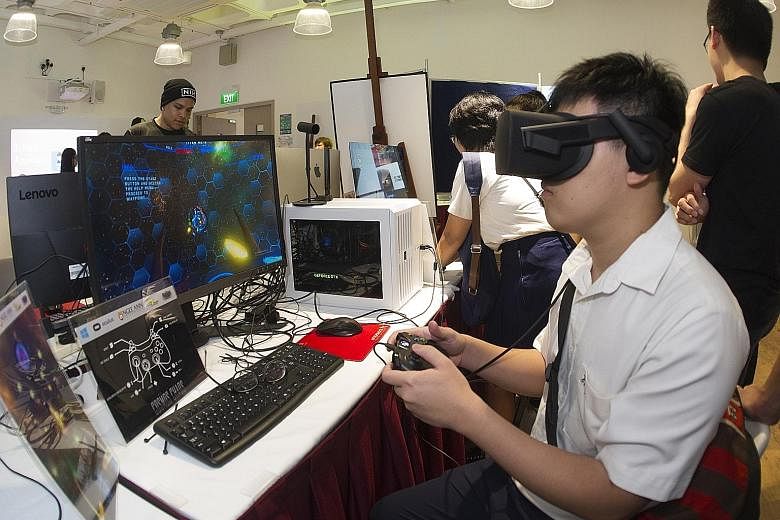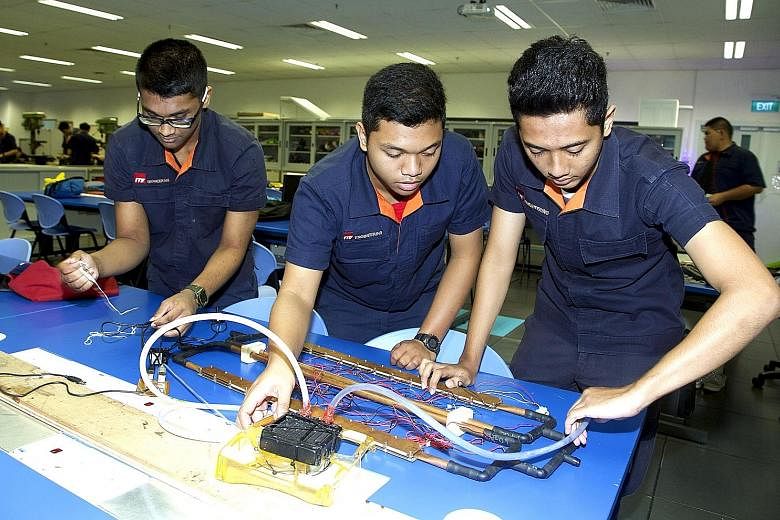Q With several junior colleges merging, will there be fewer places in JCs this year?
A When O-level students apply for a junior college (JC) after receiving their results yesterday, there will be four schools that will not appear on their option forms: Jurong Junior College (JJC), Innova Junior College (IJC), Serangoon Junior College (SRJC) and Tampines Junior College (TPJC).
Each of these schools will be merged with another and will no longer be run out of their current sites. Halting enrolment at the four schools will help reduce the need for students to physically relocate to another site.
As the mergers means fewer JCs for O-level students to choose from, the Ministry of Education said previously that the remaining schools will have to expand their intakes.
For example, Anderson JC may take in 800 to 850 students, instead of the current 750 or so.
MOE also said that even the popular JCs offering the through-train Integrated Programme (IP) may be asked to take in more students entering via the O levels.
When announcing the mergers last year, the ministry gave the assurance that every student who qualifies for JC will have a place.

MOE said this may result in an increase in cut-off points for some of the JCs, but such variations do not reflect the quality of the JCs or their programmes. Students should still choose a JC based on their distinctive programmes, co-curricular activities and school culture, to develop their strengths and interests.
Q My son received his O-level results yesterday. How is posting done for those applying to the junior colleges and polytechnics? Can he appeal if he does not get into any of his choices?
A To enter a JC, a student's L1R5 score - based on O-level results for English and five relevant subjects - must not exceed 20 points. To enter a polytechnic, a student needs a total score - based on the O-level results for English, two relevant and two best subjects - which does not exceed 26 points.
But if more high-performing students apply for a certain course with a fixed intake, the resulting cut-off score for the course will likely be more competitive.
Applicants are posted to a course according to their net aggregate scores, which take into account the various bonus points for which the applicants are eligible.
Applicants with better net aggregate scores (except those applying for nursing courses at Nanyang and Ngee Ann Polytechnic) will be considered for admission first, subject to vacancies. If there are no vacancies, then the applicant will be considered for his next choice.
Where there are two or more applicants with the same net aggregate score vying for the last place in a course, Singapore citizens will be given priority, followed by Singapore permanent residents, then international students.
If there is still a tie, say between two Singapore citizens, the one with the better gross aggregate score will be posted to the course first. If there is a tie between two citizens with the same gross aggregate scores, posting to the course will be determined by a computerised ballot.
Those who apply for nursing courses as their first choice will be given priority consideration as long as they meet the minimum entry requirement for the course, which includes a minimum D7 for English and C6 for mathematics and another science subject, and minimum net aggregate score of 28.
If your son is unsuccessful in getting a place in any of his registered choices, he will be posted to an institution as follows:
•To a JC course with vacancies, if he has indicated a JC course as his first choice. This is subject to his meeting the net L1R5 aggregate of the lowest-ranked students who were admitted to the JC course.
•To a Millennia Institute (MI) course with vacancies, if he had chosen an MI course as his first choice.
•To a polytechnic course with vacancies, if he had indicated a poly course as his first choice. This is subject to his meeting the minimum entry requirements for the course.
•If he has indicated a Higher Nitec course, which is offered at the Institute of Technical Education (ITE), as his first choice, he will be given a place in a Higher Nitec course with vacancies. Again, he must meet the course's minimum entry requirement.
If an applicant changes his mind, he may apply for a transfer to another course or institution only after the release of the posting results.
He will be evaluated on a case-by-case basis by the institution he has approached, and a place may be granted only when compelling reasons are presented and vacancies are available.
Q I am undecided between the JC and poly route. What advice can you give to help me decide?
A To enter a junior college, a student's L1R5 score must not exceed 20 points.
Polytechnics require that the total score for English and four other subjects not exceed 26 points.
But for popular courses such as biomedical science, and banking and finance, successful applicants will likely to score below 12 points.
If you qualify for both routes but are undecided on which one to take, first consider your academic preferences.
If you like a more structured and guided curriculum with a school-like environment, the junior college path may suit you more.
If you are strong in academic subjects, you should consider the junior college route too, especially if you love literature or mathematics, and want to delve deeper into these.
However, if you are inclined towards an applied learning approach that is more hands-on, with more project work, the polytechnics could be more suitable.
Think about what kind of lessons you enjoy most or learn best from. Do you understand a topic well just by listening to a lecture or by reading about it in a textbook?
Or do things make sense only after you get to do an experiment or project work?
If it is the latter, then you may be more suited for the polytechnic.
To help students decide on the course they want to pursue in the polytechnic, education and career guidance (ECG) counsellors often ask them about their interests, both academic and non-academic.
ECG counsellors say this provides an indication of the kind of careers that would suit a student.
For example, some polytechnics look for an applicant's involvement in co-curricular activities, such as the drama club or debating club, when he applies for a course in hotel and tourism management or events planning.
In these fields, it helps if you are outgoing and enjoy interacting with people. These also apply to those interested in media and communications. Besides the ability to speak and write well, you must also be curious about things and enjoy interacting with people.
It helps if you have been active in the media club and contributed articles to the school magazine.
Q What options do I have if I did not meet the minimum entry requirement for admission to poly?
A No matter how you fare in your O-level examinations, there will always be a pathway suited for you which you can explore.
The ITE offers a wide range of Nitec and Higher Nitec courses, which lead to recognised certifications.
Similar to the polys' applied learning approach, ITE courses are designed to equip students with the skills they need for jobs related to their training.
An ITE qualification also provides students with a strong foundation to deepen their skills by pursuing further education or entering the workforce.





